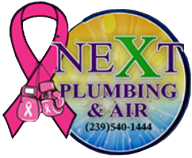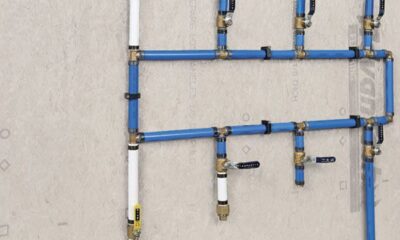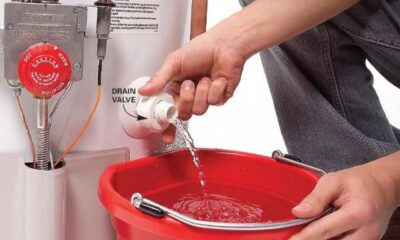Basic Home Plumbing: What You Need to Know
Simple plumbing jobs, such as replacing a washer in a faucet or unclogging a sink, do not require a lot of skill. However, for larger jobs, you may need not only some basic know-how but also a permit or license for your home plumbing system issues.
Home plumbing systems involves two areas:
The water supply system and the drain-waste-vent (DWV) system. Water enters the house through a main service pipe. Near the point of entry, you’ll usually find the main shut-off valve and often a water meter. Inside the house, the water travels under pressure through hot and cold supply pipes. Attached air chambers cushion the pressure-driven water when a faucet or appliance is turned off.
The larger DWV pipes carry used water and waste out of the house. Waste pipes carry water; soil pipes carry the discharge from toilets. A trap under the drain for each fixture keeps foul air from seeping into the house. Roof vents allow sewer gas to escape, thus balancing the air pressure in the system.
Pipes
In many older homes, the electrical system is grounded to a steel cold-water pipe. Before splicing plastic pipe into such a line, make sure the line doesn’t function as the grounding conductor. If it does, use metal pipe to make the repair. If you detach a grounding wire when making a plumbing repair, make sure to reattach it.
Different types of metal pipe can be found in homes. Copper, brass and galvanized pipes are rust-resistant and used for water lines. Less expensive un-galvanized black pipe, which rusts more readily, is used only for gas lines.
Threaded pipe is referred to by its inside dimension; 1/2-inch and 3/4-inch are the most common sizes. Before replacing threaded pipe or adding it to a line, make sure you have enough new pipe.
When estimating the length of a pipe you need to remember to allow for the overlap at joints. Plastic pipe also serves different functions. CPVC (chlorinated polyvinyl chloride) pipe is used as water supply pipe. While CPVC and PVC (polyvinyl chloride) pipes have equal chemical resistance, CPVC pipe has better resistance to high water temperatures. PVC and ABS Schedule 40 pipe are both used for drainage and vent systems.



